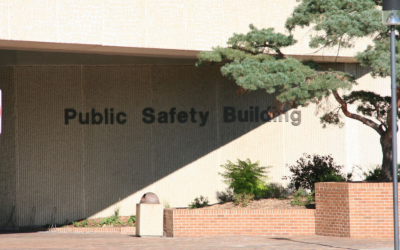Renovate or replace – these are the options government entities must decide between constantly. The tools, systems, facilities, programs, and technology necessary for efficient operations in cities, counties, schools, and state agencies are high priorities. Aging operational infrastructure is outdated, ineffective, costly, and, in some situations, dangerous. New projects are being announced weekly as public officials decide how to modernize and provide efficient services to citizens.
But, here’s the question they face: Does it make more sense to renovate old facilities or build new ones? Is old software a potential cybersecurity risk that can be updated, or must it be replaced? Can very old facilities be made to operate less costly? Most of these decisions are based on studies, cost projections, and citizen input. But, no matter the method, the decisions are never easy ones.
Here are a few examples of choices that will be made soon. Project launches will follow quickly.
North Carolina
The Halifax County School Board must decide whether to repair, renovate, or replace its high school. It will cost $63 million to repair, $88 million to renovate, or $107 million to construct a new facility. Life expectancy for the school would be 15 to 20 years for a repaired building, 25 to 30 years for a renovated building, or 55 to 70 years for a new facility. Replacing the high school would solve issues of outdated instructional design, inefficient operating equipment, security, etc., but officials will seek public input before they take action. A decision is likely soon because cost projections for each option will increase by approximately $5 million for every year of delay.
California
The Yosemite Community College District is aware of the rising costs of construction and will decide soon whether to hold a $550 million bond election in November for projects at Modesto Junior College and Columbia College. Decisions must be made on whether to renovate or build new facilities. Many educational facility needs exist in the region and about a half dozen K-12 school districts near Yosemite Community College schools have bond measures on the March ballot. A multibillion-dollar state construction bond for public schools and colleges is on the ballot statewide, so deciding on whether or not to ask voters to approve another large bond package in November is a difficult decision.
Connecticut
In November 2018, the North Branford Town Council agreed to fund a study related to construction of a new police station. City leaders have been gathering public input on whether to renovate or build a new station for the city’s police department. The current facility lacks the space needed for evidence storage and other mandated equipment. The septic and HVAC systems are ineffective and require maintenance on a routine basis. No decision about renovation or new construction has been announced yet, but it should come soon.
Ohio
Hancock County’s jail is in need of an update, and officials have been working with a consultant trying to decide whether to renovate or build a new facility. A renovation project could provide 125 to 150 additional beds at a cost of $10 million to $15 million, and a new facility would cost millions more. The current facility can accommodate 98 inmates, but there’s a backlog of individuals waiting to serve prison time. Costs for construction, renovation, expansion, and repair of jail facilities in need of attention in 58 counties around the state could exceed $1.3 billion.
Oregon
Hermiston city officials have requested more details and public input regarding construction of a new city hall. The current facility, built as a bank in 1965, was damaged in 2019 by a fire. The city has run out of room at City Hall, and employees are located in various facilities. Additionally, the city hall no longer complies with ADA regulations. A construction project to build a new facility is likely to be announced soon.
Texas
Deer Park City Council members on January 13 were provided with a presentation and later voted to approve moving forward with a two-phase construction project for a 12,000-square-foot community hall and recreation center that will be between 36,000 and 48,000 square feet. Design work should begin in a few months. Costs have been estimated to be approximately $37.7 million plus $2.5 million for an indoor swimming pool. Permanent repairs were found to be too costly for a renovation project.
Utah
The Provo City School District plans to replace Timpview High School because the structure has been deemed to be a safety hazard for students and faculty. A report details problems with the current school built in 1975. A $245 million bond election in 2019 that would have provided $145 million to replace it was not approved. Now the school district is faced with rising construction costs as time goes by. School officials continue to discuss funding options, but because of documented safety issues, a decision will be required soon.
Rhode Island
Rhode Island’s governor hopes to launch a $73.7-million, multiyear replacement of outdated computer technology for government functions. Funding for this will proposed to lawmakers in their 2020-2021 session. New software is needed to eliminate paper-based processes, reduce payroll errors, and lessen employee overtime costs. The state also wants a cloud-based system as quickly as possible.
Projects at the regional levels of government continue to be abundant. Contractors, especially construction and technology firms, may choose to pursue all types of opportunities in 2020.
SPI’s team of experienced procurement consultants have a long track record of identifying and winning public sector business. Contact them today!








